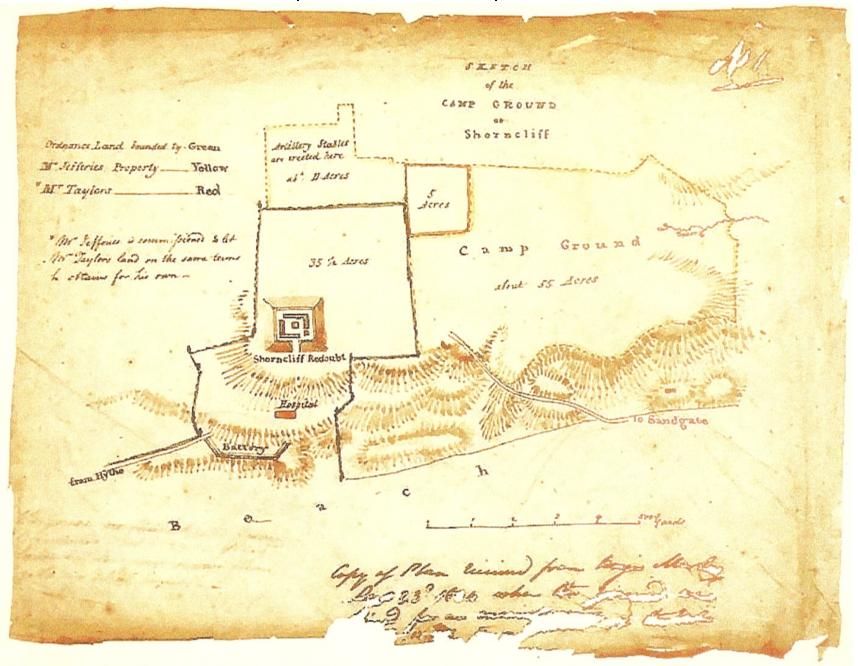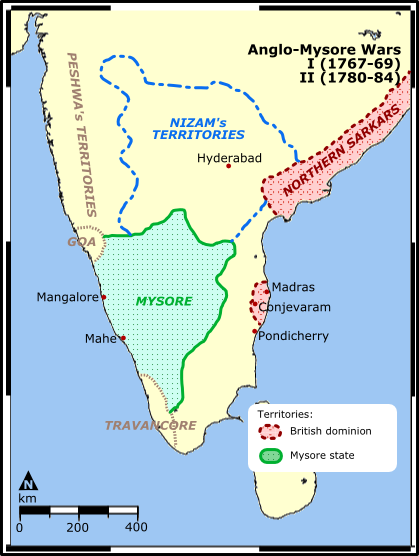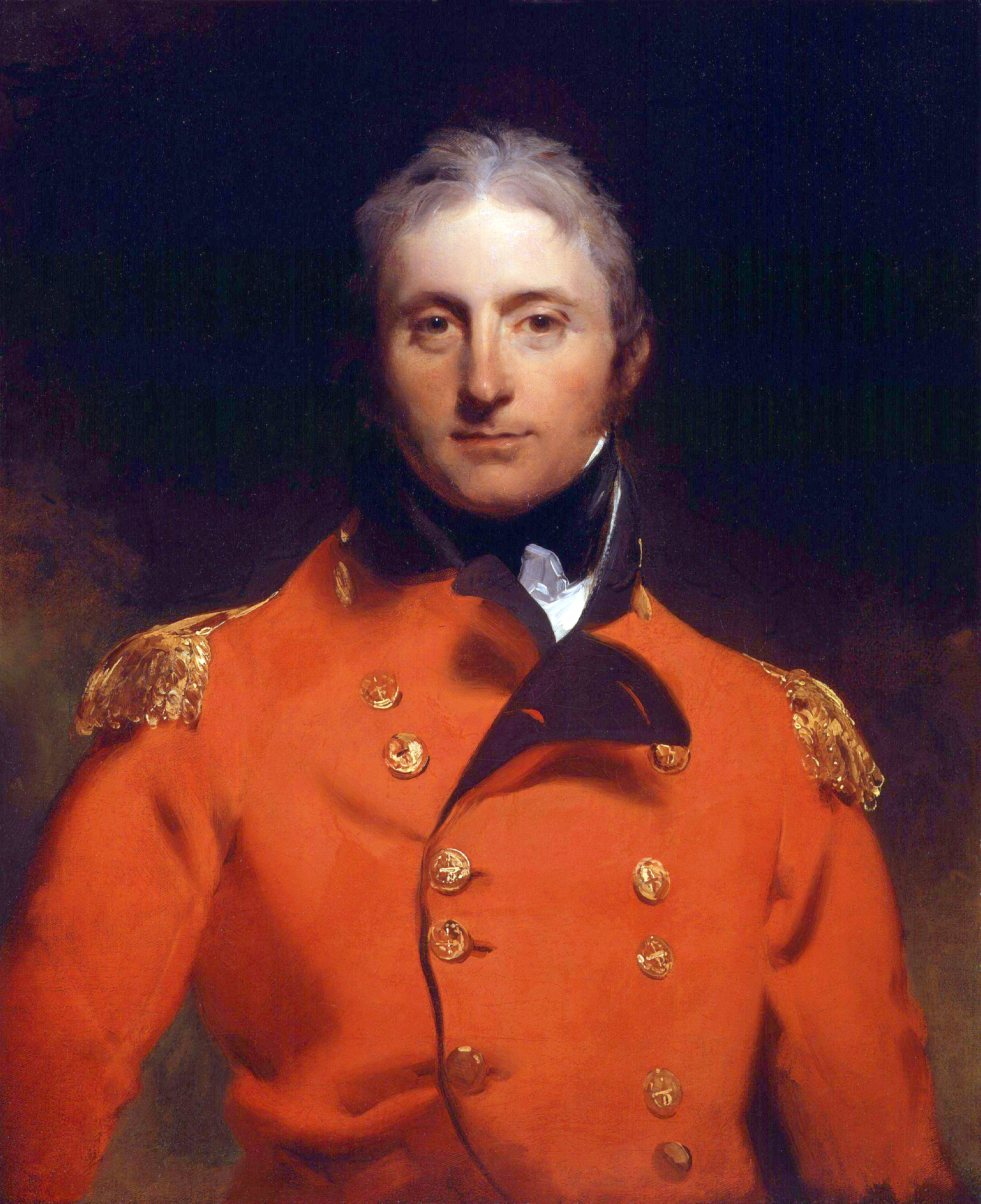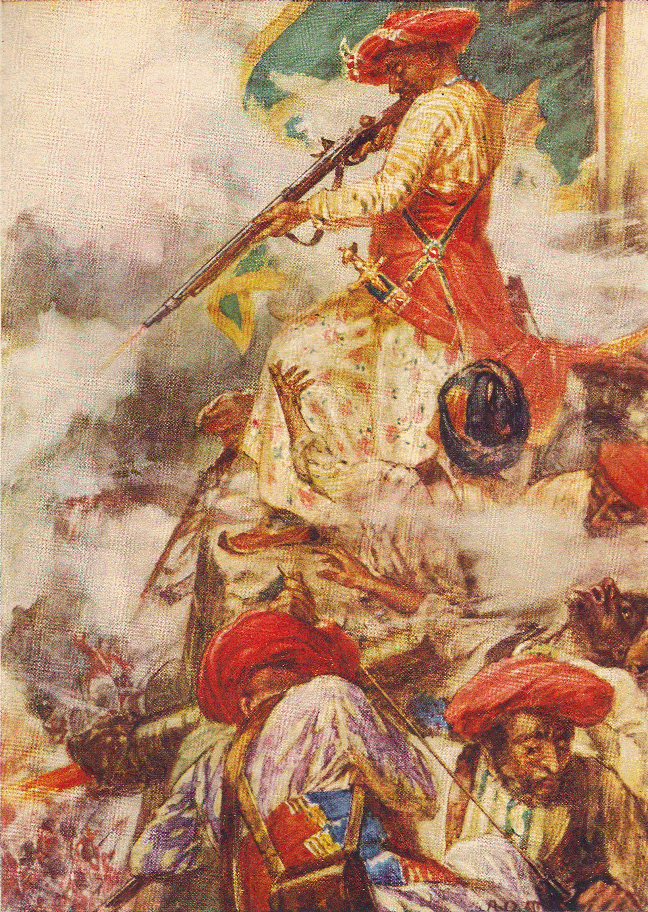|
52nd (Oxfordshire) Regiment Of Foot
The 52nd (Oxfordshire) Regiment of Foot was a light infantry regiment of the British Army throughout much of the 18th and 19th centuries. The regiment first saw active service during the American War of Independence, and were posted to India during the Anglo-Mysore Wars. During the Napoleonic Wars, the 52nd were part of the Light Division, and were present at most major battles of the Peninsula campaign, becoming one of the most celebrated regiments, described by Sir William Napier as "a regiment never surpassed in arms since arms were first borne by men". They had the largest British battalion at Waterloo, 1815, where they formed part of the final charge against Napoleon's Imperial Guard. They were also involved in various campaigns in India. The regiment was raised as a line regiment in 1755 and numbered as the "54th Foot"; they were renumbered as the "52nd Regiment of Foot" in 1757. In 1781, the regional designation "52nd (Oxfordshire) Regiment of Foot" was given and in ... [...More Info...] [...Related Items...] OR: [Wikipedia] [Google] [Baidu] |
Infantry Of The Line
Line infantry was the type of infantry that composed the basis of European land armies from the late 17th century to the mid-19th century. Maurice of Nassau and Gustavus Adolphus are generally regarded as its pioneers, while Turenne and Montecuccoli are closely associated with the post-1648 development of linear infantry tactics. For both battle and parade drill, it consisted of two to four ranks of foot soldiers drawn up side by side in rigid alignment, and thereby maximizing the effect of their firepower. By extension, the term came to be applied to the regular regiments "of the line" as opposed to light infantry, skirmishers, militia, support personnel, plus some other special categories of infantry not focused on heavy front line combat. Linear tactics and function Line infantry mainly used three formations in its battles: the line, the square and the column. With the massive proliferation of small arms (firearms that could be carried by hand, as opposed to cannon) in ... [...More Info...] [...Related Items...] OR: [Wikipedia] [Google] [Baidu] |
Second Anglo-Mysore War
The Second Anglo-Mysore War was a conflict between the Kingdom of Mysore and the British East India Company from 1780 to 1784. At the time, Mysore was a key French ally in India, and the conflict between Britain against the French and Dutch in the American Revolutionary War sparked Anglo-Mysorean hostilities in India. The great majority of soldiers on the company side were raised, trained, paid and commanded by the company, not the British government. However, the company's operations were also bolstered by Crown troops sent from Britain, and by troops from Hanover, which was also ruled by Britain's King George III. Following the British seizure of the French port of Mahé in 1779, Mysorean ruler Hyder Ali opened hostilities against the British in 1780, with significant success in early campaigns. As the war progressed, the British recovered some territorial losses. Both France and Britain sent troops and naval squadrons from Europe to assist in the war effort, which widened la ... [...More Info...] [...Related Items...] OR: [Wikipedia] [Google] [Baidu] |
Battle Of Corunna
The Battle of Corunna (or ''A Coruña'', ''La Corunna'', ''La Coruña'' or ''La Corogne''), in Spain known as Battle of Elviña, took place on 16 January 1809, when a French corps under Marshal of the Empire Jean de Dieu Soult attacked a British army under Lieutenant-General Sir John Moore. The battle took place amidst the Peninsular War, which was a part of the wider Napoleonic Wars. It was a result of a French campaign, led by Napoleon, which had defeated the Spanish armies and caused the British army to withdraw to the coast following an unsuccessful attempt by Moore to attack Soult's corps and divert the French army. Doggedly pursued by the French under Soult, the British made a retreat across northern Spain while their rearguard fought off repeated French attacks. Both armies suffered extremely from the harsh winter conditions. Much of the British army, excluding the elite Light Brigade under Robert Craufurd, suffered from a loss of order and discipline during the ret ... [...More Info...] [...Related Items...] OR: [Wikipedia] [Google] [Baidu] |
Battle Of Vimeiro
In the Battle of Vimeiro (sometimes shown as "Vimiera" or "Vimeira" in contemporary British texts) on 21 August 1808, the British under General Arthur Wellesley (who later became the Duke of Wellington) defeated the French under Major-General Jean-Andoche Junot near the village of Vimeiro (), near Lisbon, Portugal during the Peninsular War. This battle put an end to the first French invasion of Portugal. Four days after the Battle of Roliça, Wellesley's army was attacked by a French army under General Junot near the village of Vimeiro. The battle began as a battle of manoeuvre, with French troops attempting to outflank the British left, but Wellesley was able to redeploy his army to face the assault. Meanwhile, Junot sent in two central columns but these were forced back by sustained volleys from troops in line. Soon afterwards, the flanking attack was beaten off and Junot retreated towards Torres Vedras, having lost 2,000 men and 13 cannon, compared to 700 Anglo-P ... [...More Info...] [...Related Items...] OR: [Wikipedia] [Google] [Baidu] |
Peninsular War
The Peninsular War (1807–1814) was the military conflict fought in the Iberian Peninsula by Spain, Portugal, and the United Kingdom against the invading and occupying forces of the First French Empire during the Napoleonic Wars. In Spain, it is considered to overlap with the Spanish War of Independence. The war started when the French and Spanish armies invaded and occupied Portugal in 1807 by transiting through Spain, and it escalated in 1808 after Napoleonic France occupied Spain, which had been its ally. Napoleon Bonaparte forced the abdications of Ferdinand VII and his father Charles IV and then installed his brother Joseph Bonaparte on the Spanish throne and promulgated the Bayonne Constitution. Most Spaniards rejected French rule and fought a bloody war to oust them. The war on the peninsula lasted until the Sixth Coalition defeated Napoleon in 1814, and is regarded as one of the first wars of national liberation. It is also significant for the emergence of larg ... [...More Info...] [...Related Items...] OR: [Wikipedia] [Google] [Baidu] |
Ferrol Expedition
The Ferrol Expedition (or Battle of Brión) took place on 25 and 26 August 1800, and was an unsuccessful British attempt to capture Ferrol from Spain. Ferrol was a major Spanish naval base with a shipyard for shipbuilding and dry dock for repairs. Background The primary object of the British expedition and fleet of 109 ships during the year 1800 was the conquest of Belle Île but the defences appeared too strong. The expedition therefore proceeded to the coast of Spain, where it arrived on 25 August. Battle After a heavy cannonade against a small Spanish fort of eight 24-pounder cannon by the British ships of the line HMS ''Impetueux'' with 74 guns, HMS ''London'' with 96 guns, HMS ''Courageux'', HMS ''Renown'' and HMS ''Captain'', each with 74 guns. HMS Impetueus, HMS Brilliant, HMS Cynthia an the small gunner HMS St. Vincent, state on their logs to had taken part on the gunning of the small Fort. No mention on HMS London and HMS Renown logs of being part of the gunn ... [...More Info...] [...Related Items...] OR: [Wikipedia] [Google] [Baidu] |
Quiberon
Quiberon (; , ) is a commune in the French department of Morbihan, administrative region of Brittany, western France. It is situated on the southern part of the Quiberon peninsula, the northern part being the commune of Saint-Pierre-Quiberon. It is primarily known as a seaside resort for French tourists during summer, and for its history of sardine production. Quiberon is connected to the mainland by a tombolo. History During the Seven Years' War the bay was the site of the Battle of Quiberon Bay (1759) between the French and British fleets. Then later in July 1795 during the period of the French Revolution, Quiberon was also used by French Royalist exiles, with assistance from the British, as the base for a failed invasion of Brittany (traditionally a royalist area). The invasion was defeated by the Revolutionaries under General Lazare Hoche. In the 19th century, Nicolas Appert, a chemist, developed a technique that permitted the sterilization of food. Thanks to this proces ... [...More Info...] [...Related Items...] OR: [Wikipedia] [Google] [Baidu] |
Sri Lanka
Sri Lanka (, ; si, ශ්රී ලංකා, Śrī Laṅkā, translit-std=ISO (); ta, இலங்கை, Ilaṅkai, translit-std=ISO ()), formerly known as Ceylon and officially the Democratic Socialist Republic of Sri Lanka, is an island country in South Asia. It lies in the Indian Ocean, southwest of the Bay of Bengal, and southeast of the Arabian Sea; it is separated from the Indian subcontinent by the Gulf of Mannar and the Palk Strait. Sri Lanka shares a maritime border with India and Maldives. Sri Jayawardenepura Kotte is its legislative capital, and Colombo is its largest city and financial centre. Sri Lanka has a population of around 22 million (2020) and is a multinational state, home to diverse cultures, languages, and ethnicities. The Sinhalese are the majority of the nation's population. The Tamils, who are a large minority group, have also played an influential role in the island's history. Other long established groups include the Moors, ... [...More Info...] [...Related Items...] OR: [Wikipedia] [Google] [Baidu] |
Siege Of Pondicherry (1793)
The siege of Pondicherry was a colonial military operation in the early stages of the French Revolutionary Wars. Britain and France both controlled colonies on the Indian Subcontinent and when the French National Convention declared war on Britain on 1 February 1793, both sides were prepared for conflict in India. British India was centred on the principal ports of Bombay, Madras and Calcutta, administered by the East India Company. French India was governed from Pondicherry (modern Puducherry) on the Coromandel Coast. British forces in India were considerably stronger than the French, with the British Indian Army supported by British Army detachments and a Royal Navy squadron under Rear-Admiral William Cornwallis. Pondicherry's defenses were strong, but the garrison was too small to effectively man the walls, and although a French frigate squadron was stationed at the distant Île de France, it was unable to effectively protect the French Indian coast. News of the outbreak o ... [...More Info...] [...Related Items...] OR: [Wikipedia] [Google] [Baidu] |
French Revolutionary Wars
The French Revolutionary Wars (french: Guerres de la Révolution française) were a series of sweeping military conflicts lasting from 1792 until 1802 and resulting from the French Revolution. They pitted France against Britain, Austria, Prussia, Russia, and several other monarchies. They are divided in two periods: the War of the First Coalition (1792–97) and the War of the Second Coalition (1798–1802). Initially confined to Europe, the fighting gradually assumed a global dimension. After a decade of constant warfare and aggressive diplomacy, France had conquered territories in the Italian Peninsula, the Low Countries and the Rhineland in Europe and abandoned Louisiana in North America. French success in these conflicts ensured the spread of revolutionary principles over much of Europe. As early as 1791, the other monarchies of Europe looked with outrage at the revolution and its upheavals; and they considered whether they should intervene, either in support of King Louis ... [...More Info...] [...Related Items...] OR: [Wikipedia] [Google] [Baidu] |
Siege Of Seringapatam (1792)
The 1792 Siege of Seringapatam was a battle and siege of the Mysorean capital city of Seringapatam (Srirangapatna) at the end of the Third Anglo-Mysore War. An army led by Charles, Earl Cornwallis, consisting of British East India Company and British Army forces, along with allied forces from the Maratha Empire and the Nizam of Hyderabad, arrived at Seringapatam on 5 February 1792, and after less than three weeks of battle and siege, forced Tipu Sultan to capitulate. With his agreement to the Treaty of Seringapatam on 18 March 1792, the war came to an end. Background The prospects for Tipu Sultan, the Muslim ruler of the Kingdom of Mysore, had declined significantly during the 1791 campaign season of the Third Anglo-Mysore War. Although he had been able to reverse some advances made by forces of the British East India Company forces under General William Medows in 1790, he had lost ground on all fronts in 1791, and only a slash-and-burn policy to deprive his opponents of p ... [...More Info...] [...Related Items...] OR: [Wikipedia] [Google] [Baidu] |






